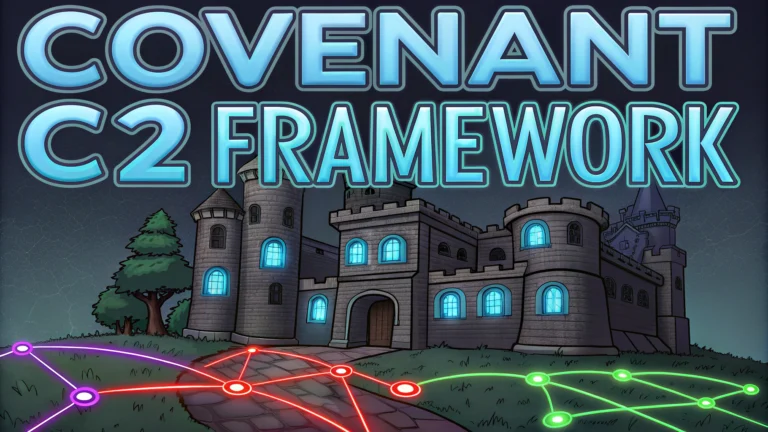The Covenant C2 framework is an advanced command and control (C2) platform designed specifically for red team operations and penetration testing assessments.
This post-exploitation framework, written in .NET, enables security teams to maintain persistent access and control over compromised systems while evading detection.
Key Features of Covenant
- Multi-user collaboration support
- Customizable C2 communication profiles
- Built-in OPSEC safe execution
- Encrypted communication channels
- Web-based interface for easy management
Setting Up Covenant
- Clone the repository:
git clone --recurse-submodules https://github.com/cobbr/Covenant - Install .NET Core SDK
- Build and run:
dotnet build; dotnet run
Common Use Cases
- Remote system administration
- Lateral movement testing
- Persistence mechanism validation
- Defense evasion testing
Security Considerations
Always obtain proper authorization before deploying Covenant in any environment.
Use dedicated testing environments separated from production systems when possible.
Detection & Prevention
- Monitor for unusual .NET framework execution
- Watch for suspicious PowerShell activities
- Track unexpected outbound connections
- Implement application allowlisting
Additional Resources
Report bugs and security issues to the project maintainers through the official GitHub repository.
For technical support, join the Bloodhound Gang Slack channel where the Covenant community actively participates.
Alternatives to Covenant
- Metasploit Framework
- PowerShell Empire
- Cobalt Strike (Commercial)
- Sliver C2
Advanced Configuration
- Custom listener profiles
- Task automation and scheduling
- Malleable C2 profile generation
- Multi-staging capabilities
Integration Capabilities
- REST API support
- Third-party tool compatibility
- Custom module development
- Data exfiltration handling
Common Integration Points
- SIEM systems
- Vulnerability scanners
- Reporting platforms
- Threat intelligence feeds
Best Practices
- Regular payload rotation
- Network segmentation during testing
- Proper logging and documentation
- Incident response coordination
Troubleshooting
- Connection issues
- Listener conflicts
- Payload generation errors
- Database connectivity problems
Conclusion
Covenant provides a robust platform for security testing and red team operations. Its .NET foundation and modern architecture make it a valuable tool for security professionals conducting authorized assessments.
While powerful, users must exercise caution and maintain proper authorization and documentation when utilizing this framework. Regular updates and community engagement ensure Covenant remains effective and secure for professional security testing.
FAQs
- What is Covenant C2 Framework?
Covenant is a .NET-based command and control framework designed for red team operations and penetration testing, offering a web-based interface to conduct post-exploitation activities. - How does Covenant differ from other C2 frameworks?
Covenant utilizes .NET and PowerShell for its operations, implements the Grunts communication protocol, and features a modern web interface while being cross-platform compatible. - What are Grunts in Covenant?
Grunts are Covenant’s agents or implants that execute on target systems, facilitating communication between the compromised host and the C2 server through customizable network protocols. - What programming languages does Covenant support for task development?
Covenant primarily supports C# and PowerShell, allowing operators to develop and deploy custom tasks and modules written in these languages. - What listener types does Covenant support?
Covenant supports HTTP, HTTPS, and SMB listeners, with the ability to customize communication profiles and implement custom listeners for specific operational requirements. - How does Covenant handle persistence?
Covenant includes multiple persistence mechanisms, including registry modifications, scheduled tasks, and service creation, with the ability to implement custom persistence methods through its task system. - What authentication methods does Covenant implement?
Covenant implements role-based authentication with multiple user roles (Administrator, Operator, User) and supports secure password hashing for user accounts. - How does Covenant handle encrypted communications?
Covenant uses strong encryption for all command and control traffic, supporting custom SSL certificates for HTTPS listeners and implementing additional payload encryption measures. - What types of data collection capabilities does Covenant offer?
Covenant includes built-in modules for keylogging, screenshot capture, credential harvesting, and file system enumeration, with results stored in its integrated database. - Can Covenant integrate with other security tools?
Yes, Covenant provides REST API endpoints allowing integration with other security tools and custom scripts, enabling automation and extended functionality.







